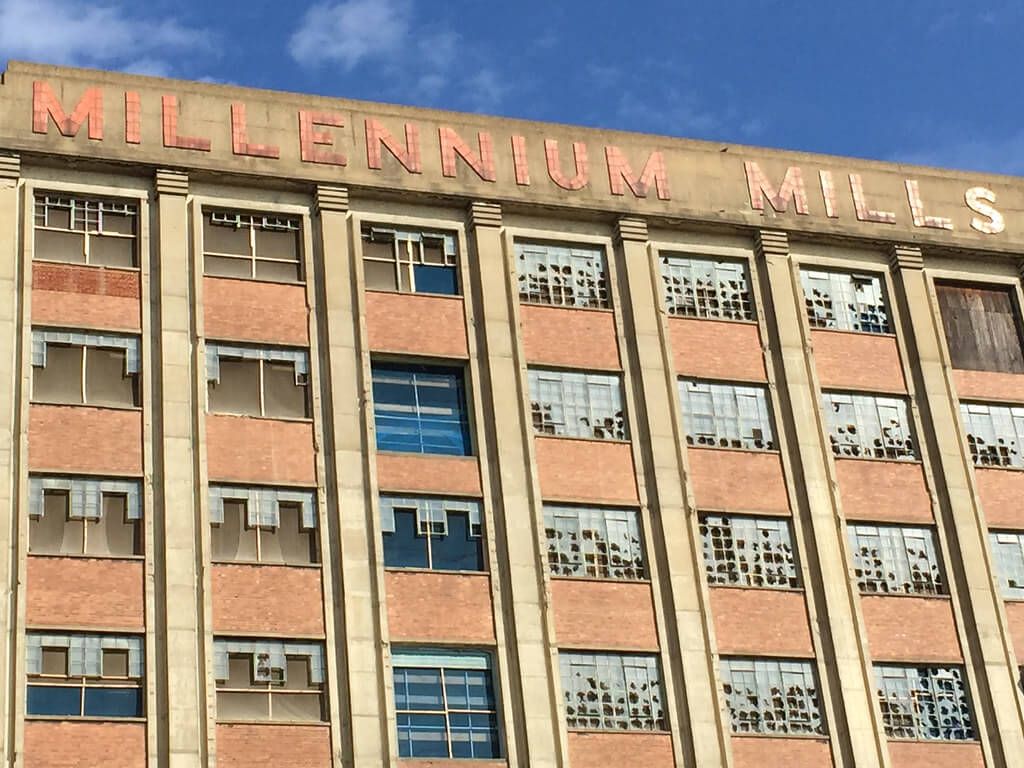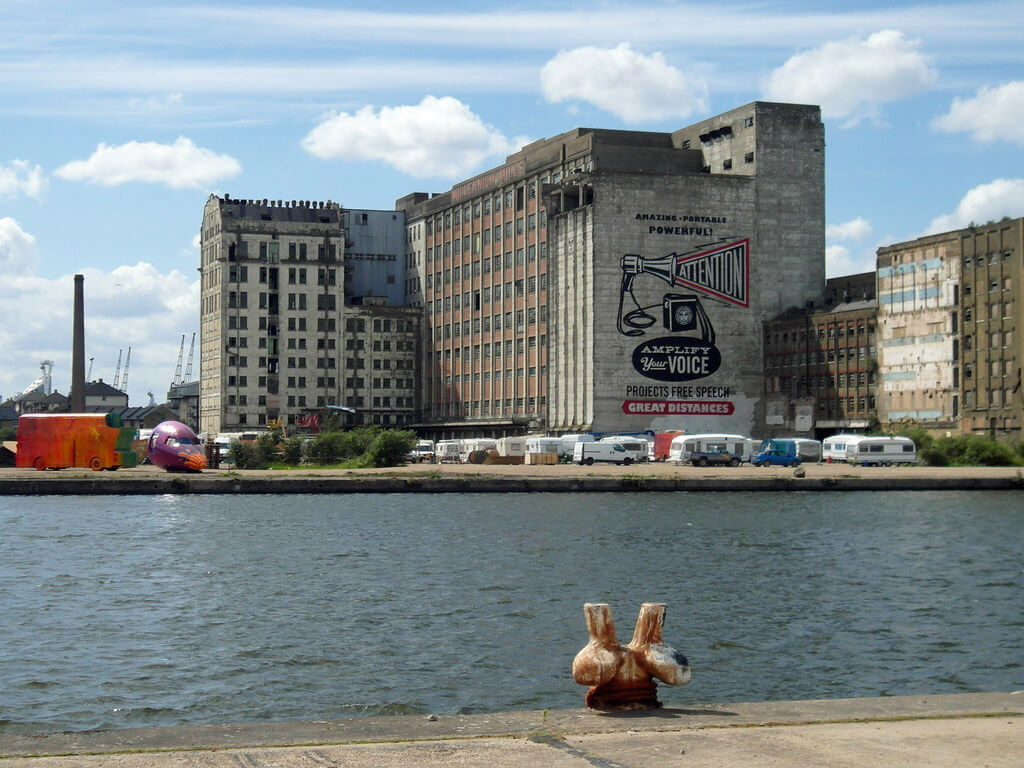Millennium Mills, standing defiantly on London’s Royal Victoria Dock, represents one of the most striking examples of industrial architecture in the capital’s history. Built in the early 1900s, this massive concrete structure has become an iconic symbol of London’s docklands heritage and industrial past.
The original Millennium Mills was constructed in 1905 by William Vernon & Sons for Spillers, then the nation’s largest flour milling company. The building was named after their flagship flour product, “Millennium Flour.” The initial structure was designed in the typical industrial architecture style of the period, featuring robust brick construction and large windows to maximize natural light for the workers.
However, the original building’s life was cut short when it was largely destroyed in 1917 by the Silvertown explosion, a massive blast at a nearby munitions factory that devastated much of the local area. The building was rebuilt in 1933 in the Art Deco industrial style that we recognize today, with its distinctive clean lines and stepped profile. This reconstruction created the imposing twelve-story concrete structure that dominates the docklands skyline.
The architectural design of Millennium Mills exemplifies the functionality-driven approach of industrial architecture from the interwar period. The building’s reinforced concrete frame construction was cutting-edge for its time, allowing for large, open floor spaces that could accommodate the heavy machinery required for flour milling. The exterior features rows of steel-framed windows that run the length of the building, designed to provide optimal natural light for the workers inside.
One of the building’s most distinctive features is its central tower, which rises several stories above the main structure. This tower housed the building’s vital machinery and served as a local landmark visible from considerable distances. The exterior concrete surfaces were left largely unadorned, creating a stark, modernist aesthetic that emphasized the building’s industrial purpose.
The internal layout was designed around the flour milling process, with grain being hoisted to the top of the building and then working its way down through various processes on each floor. This vertical integration of the manufacturing process was typical of mills from this period and influenced the building’s tall, narrow design.
Millennium Mills continued operating through World War II, despite sustaining damage from bombing raids. The building’s robust construction helped it survive the intensive bombing of the docklands area, though it required repairs in the post-war period. The mills remained operational through the 1950s and 1960s, even as London’s docklands began their gradual decline.
The closure of the Royal Docks in 1981 marked the beginning of a long period of abandonment for Millennium Mills. As the surrounding area fell into disuse, the building became one of London’s most prominent derelict structures. Its imposing presence and deteriorating condition made it a popular location for film and television productions, appearing in various music videos, movies, and TV shows, which helped cement its status as an icon of industrial decay.

Throughout the 1990s and early 2000s, various redevelopment plans were proposed but failed to materialize. The building’s vast size, contamination from its industrial past, and the complexity of renovation made it a challenging prospect for developers. However, its striking appearance and historic significance helped ensure its survival when many similar industrial buildings were demolished.
In recent years, Millennium Mills has become part of the larger regeneration of the Royal Docks area. Current plans involve converting the building into a mixed-use development while preserving its distinctive external appearance. The proposed redevelopment aims to create workspace for creative industries, maintaining something of the building’s productive heritage while adapting it for modern use.
The building’s architectural significance extends beyond its impressive scale and design. It stands as one of the few remaining examples of the large-scale industrial architecture that once characterized London’s docklands. Its presence serves as a reminder of the area’s industrial heritage and the scale of London’s former port operations.
The preservation and planned adaptation of Millennium Mills represents a growing appreciation for industrial heritage buildings and their potential for creative reuse. Like many industrial structures from its era, the building’s robust construction and large, open spaces make it potentially well-suited for modern commercial and creative uses, though the challenges of renovation remain significant.
Today, Millennium Mills stands as both a monument to London’s industrial past and a symbol of the ongoing transformation of the docklands area. Its imposing presence continues to captivate visitors and locals alike, while its planned redevelopment suggests a future that may finally balance preservation of its historic character with new, productive use.
A Little Bit of London In Your Inbox Weekly. Sign-up for our free weekly London newsletter. Sent every Friday with the latest news from London!




